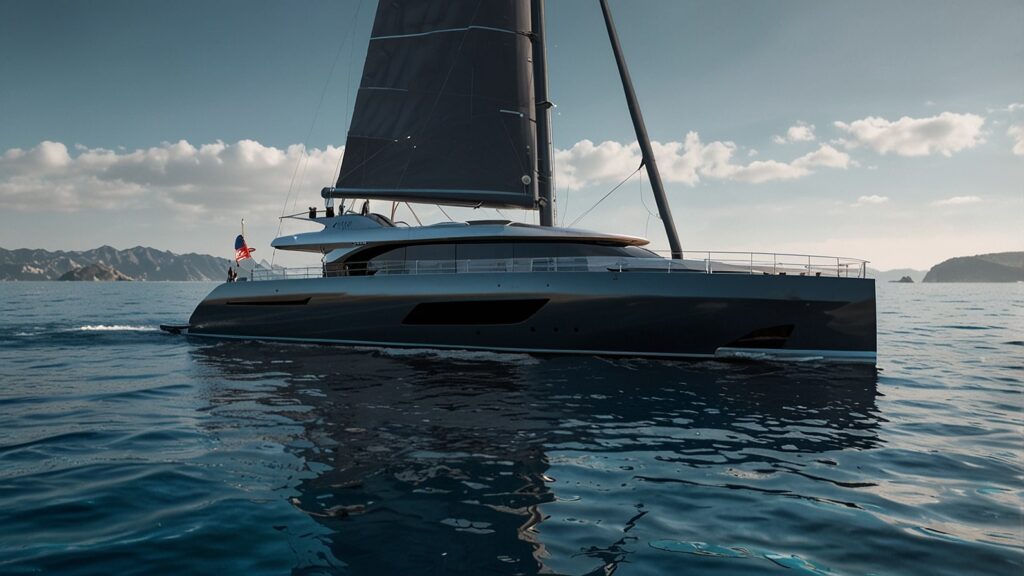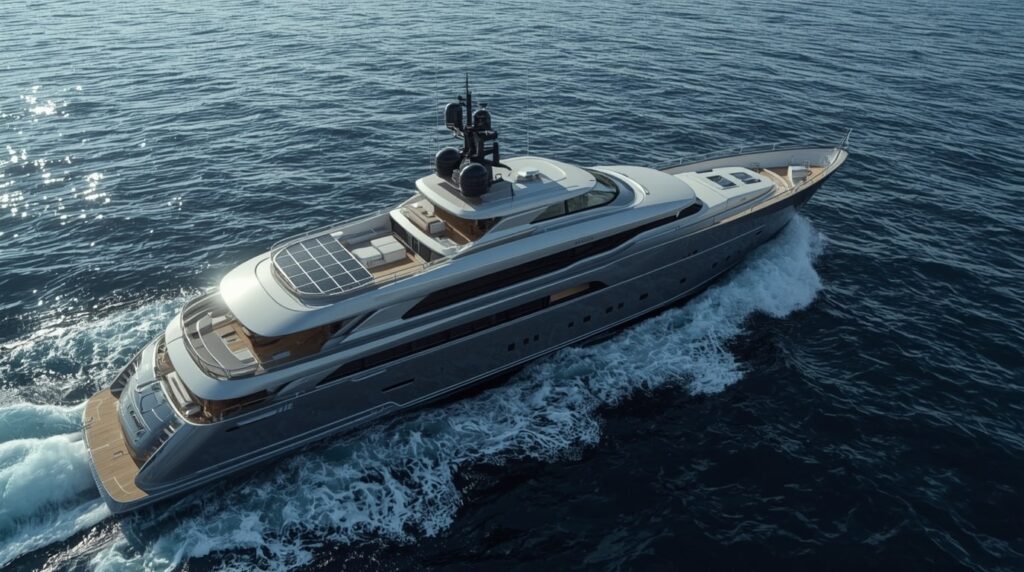According to industry analysts, the hydrogen-powered superyachts will experience a sharp rise in demand by 2030, because of sustainability requirements and high-end consumers who pursue eco-luxury. Market predictors demonstrate that the hydrogen yacht industry will be at 2.94 billion by the year 2031, with innovative construction projects such as the Feadship Project 821 taking the lead in moving the high-end yachting industry towards a net-zero-emission planet.
Key Insights on Hydrogen Superyacht Demand
Recent announcements suggest a surging popularity of hydrogen technology in superyachts due to the development of fuel cells and green power. It is estimated that the Hydrogen-Powered Yacht Market will reach up to $2.94 billion in 2031 because of the replacement of diesel engines with zero-emission ones.
Major manufacturers such as Sanlorenzo are working on making the first fully hydrogen-powered superyacht, as of 2030, a continuation of existing hybrid models. This trend was reinforced by the recent introduction of the first hydrogen fuel-cell yacht in the world by Feadship.
- Market Growth Forecasts: Hydrogen yachts are forecasted by analysts to have a compound annual growth rate (CAGR) above 20%, more than the projected 5-6% CAGR of yachts in the overall market by 2030.
- Technological Advances: Hydrogen fuel cells allow silent and emission-free range cruising with a range of up to 1,000 nautical miles in hybrids.
- Huge Adoptions: A 645-million superyacht, purchased by Bill Gates, can be considered a pioneer in fully hydrogen-powered ships, which will become a trend among ultra-rich people.
- Sustainability Focus: Combining with renewable hydrogen sources, such as the electrolysis of green H 2, is in line with the global net-zero policies.
These lessons can indicate that hydrogen is a disruptor in the superyacht market.
How Hydrogen Will Enhance Superyacht Experiences
Hydrogen-powered yachts will bring unmatched opulence to the environment with the least environmental effects, as they operate quietly and have a long range beyond the hassles associated with refuelling them. The owners will be able to have peaceful trips without hearing engines and exhaust fumes.
High-tech systems can be integrated with onboard amenities, including spas and cinemas, that use clean energy. This customisation goes further to include intelligent energy-saving controls.
Statistics in the industry indicate that hydrogen yachts may emit 90% less CO2 compared to traditional fuels, which will be attractive to the environmentally sensitive clients. Hydrogen variants will take a 15-20% share as the luxury yacht market will reach up to 13.79 billion by 2030.
Shorter journeys will be greener, and longer distances with hybrid methanol-hydrogen technology will offer guests a healthier air atmosphere and such new amenities as hydrogen-powered tenders.
On the whole, these yachts bring a superyacht experience to sustainable levels.

Why Demand is Set to Surge by 2030
The anticipated increase in demand for hydrogen superyachts is due to the high emission control and the desire by an increasing number of billionaires to pursue sustainable luxury through hydrogen-powered superyachts. By 2030, EU and IMO regulations can require zero-emission areas, and yacht manufacturers will be forced to move towards hydrogen.
The rivalry in the superyacht market grows, and such brands as Oceanco aim to have all-renewable energy costs by 2030. This reflects wider market trends in yachting, whereby the market is being innovated with eco innovations.
According to expert opinion in the yachting industry, Hydrogen fuel cells are the future of green yachting, with regard to methanol and hydrogen alternatives. The article Boat International explores this changing scenario.
ESG factors are the most significant concern of wealthy customers in the post-pandemic market, which is expected to enhance the demand for hydrogen-powered yachts in 2030. This is further being spurred by technological affordability as the cost of hydrogen continues to drop.
To learn more about the topic of sustainable boating, refer to (Insert internal link to the green yachting trends article).
Best Leading Projects and Builders of Hydrogen Yachts
The first hydrogen fuel-cell superyacht, developed by Feadship Projects 821, is in operation and is looking at expansions. The roadmap of Sanlorenzo aims at achieving a complete hydrogen ship in 2030.
The Aqua yacht, which is owned by Bill Gates and is worth 645 million, demonstrates the feasibility of hydrogen when it comes to long-range cruising. Hybrid models are being negotiated by other builders, such as Sunreef, in the wider yacht market.
These expeditions cover the waters of the Earth, Mediterranean charters, or Pacific expeditions. The rollouts will be faster after 2026, and the market will be penetrated completely in 2030.
Find out about more builders, though (Insert internal link to superyacht builders guide).
Frequently Asked Questions
What is driving the demand for hydrogen superyachts?
The need to comply with environmental rules, new technologies, and eco-friendly consumers has stimulated the demand for hydrogen superyachts. It is estimated that there is a market value of 2.94 billion by the year 203,1, and hydrogen will provide zero-emission luxury.
When will hydrogen-powered yachts become the norm?
Hydrogen yachts 2030 will have an explosion, and the earliest models will include the Sanlorenzo model by this time. The widespread availability is supported by the early adopters, such as the launch of the 2024 by Feadship.
Who are the hydrogen yacht market leaders?
The most prominent construction companies are Feadship, Sanlorenzo and Oceanco. Project 821 by Feadship is the first hydrogen fuel-cell yacht in the world, whereas others target net-zero in 2030.
What are the benefits of hydrogen yachts to the environment?
Hydrogen yachts would produce up to 90% less emissions, which is achieved by using clean fuel cells as an alternative to diesel. This will contribute to sustainable trends in superyachts, which conform to the net-zero goals in the world.
Can hydrogen superyachts be more expensive?
Yes, initially, because of the cost of technology, although prices are likely to come down by 2030 as production is scaled. Compliance and premiums are neutralised in the long term through fuel savings.
Conclusion
The increase in the demand for hydrogen superyachts by the year 2030 is a sign of a brighter age of luxury yachting that is both innovative and environmentally responsible. Transformational changes are predicted to take place in the industry as the projects are developed.
Keep abreast of the green trends. IndustryARC Hydrogen Yacht Market. To analyse this in detail, go to Boat International on Green Yachting.

Leave a Reply